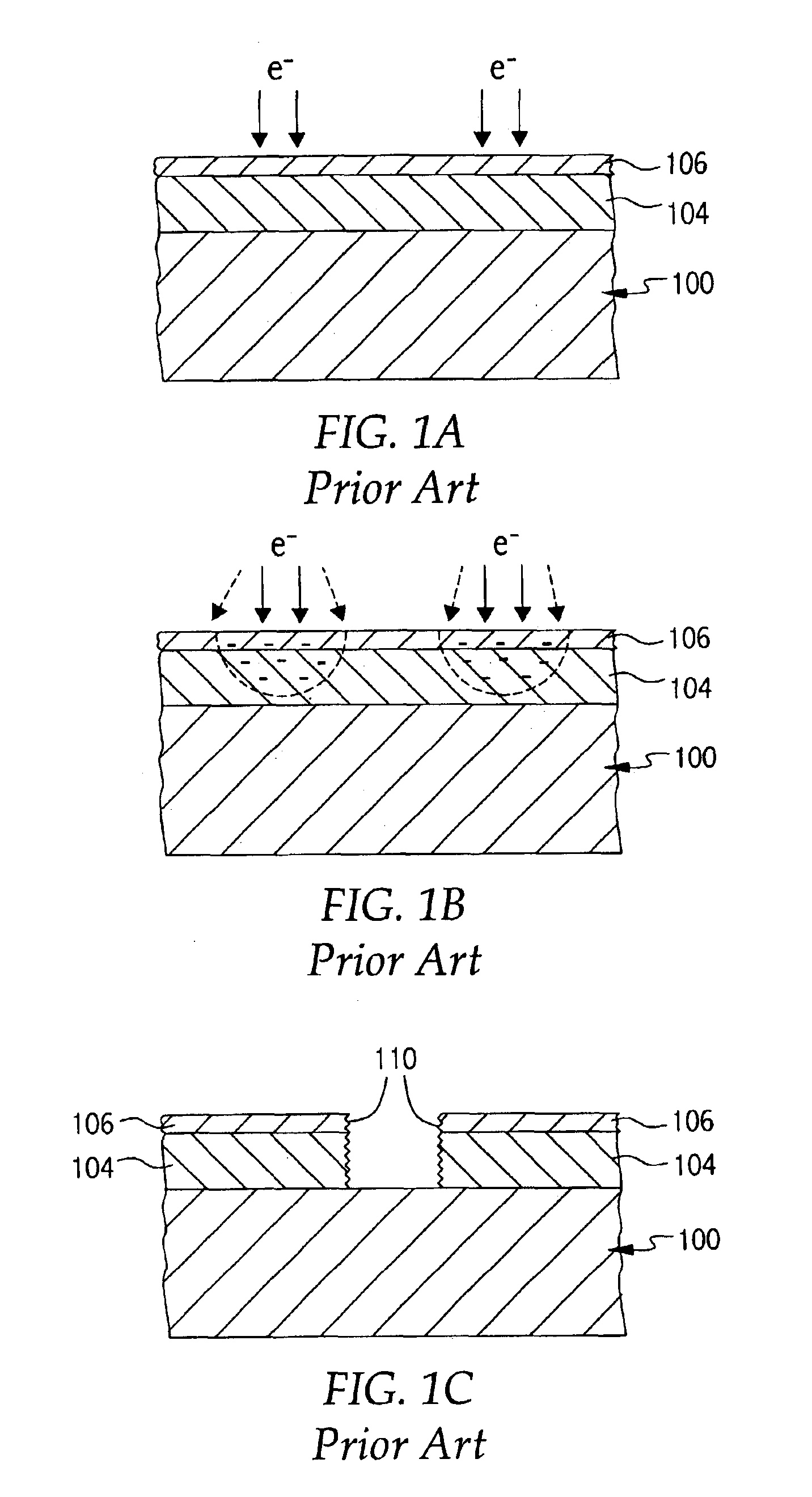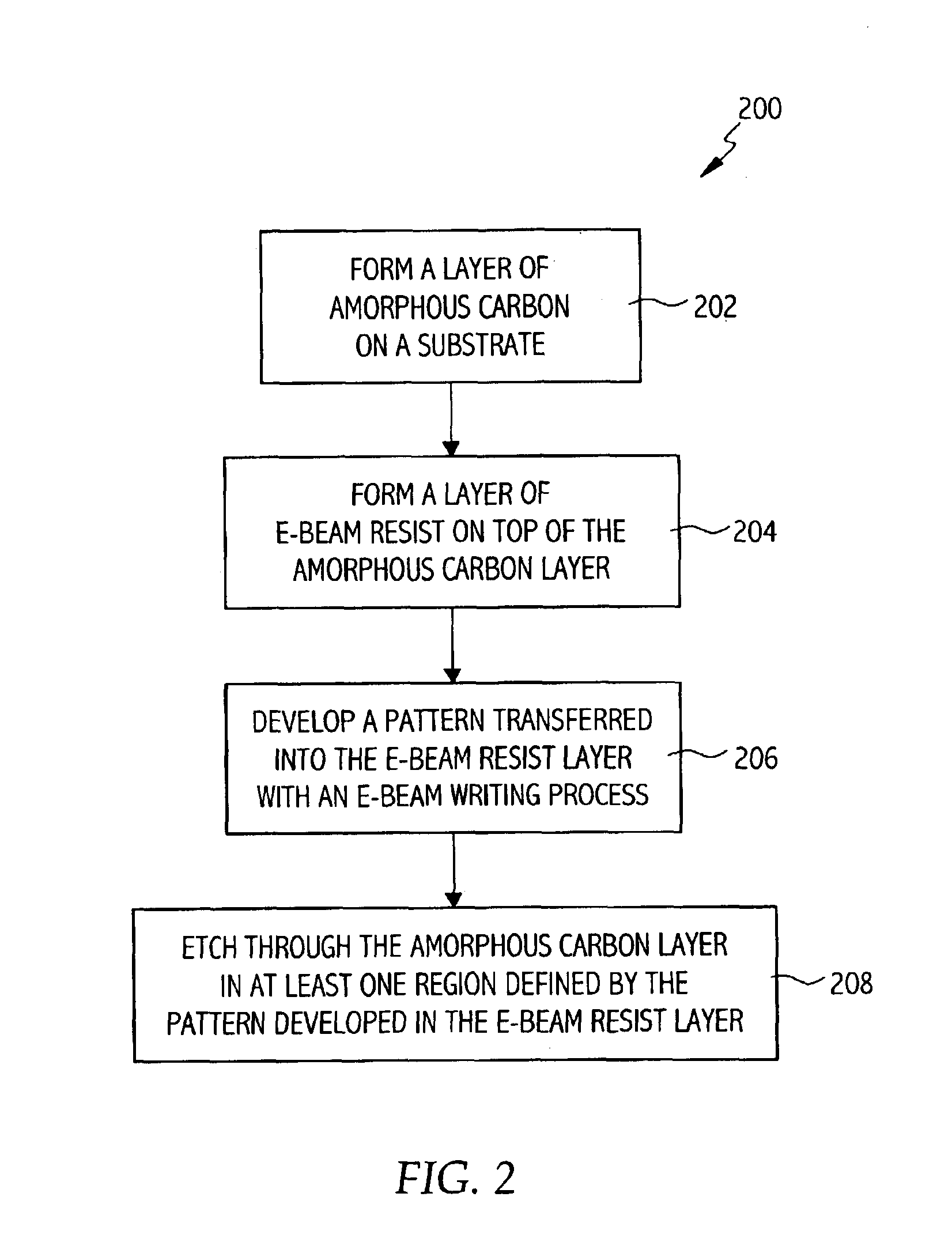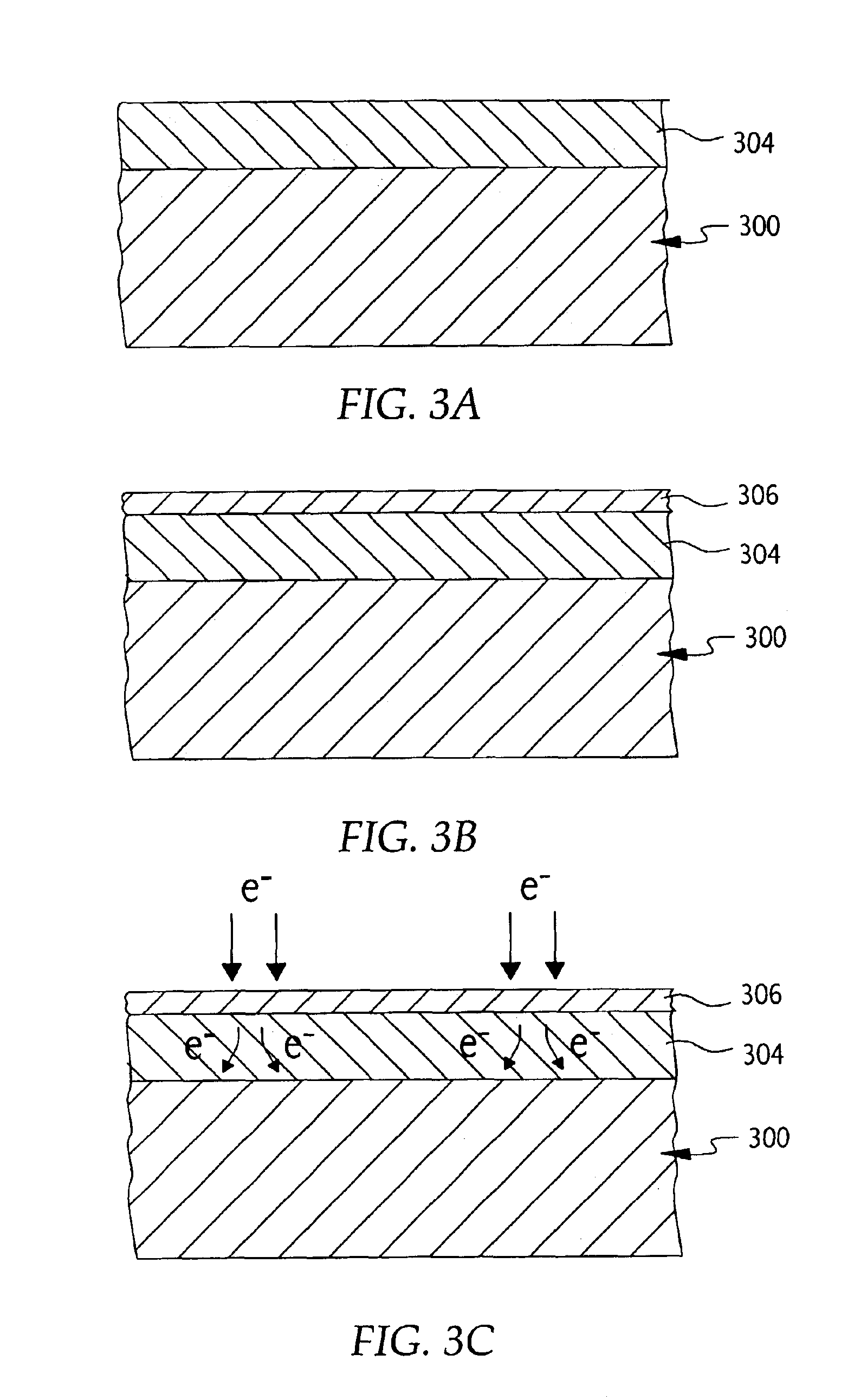Conductive bi-layer e-beam resist with amorphous carbon
a technology of amorphous carbon and conductive bi-layers, applied in the field of integrated circuit (ic) fabrication methods, can solve the problems of reducing the resolution of the pattern, ics have evolved into complex devices, and conventional photolithographic techniques have a lower limit in the dimension of the pattern that may be formed
- Summary
- Abstract
- Description
- Claims
- Application Information
AI Technical Summary
Benefits of technology
Problems solved by technology
Method used
Image
Examples
Embodiment Construction
[0021]Embodiments of the present invention generally provide methods for forming integrated circuits utilizing a bi-layer resist formed by depositing a layer of electron beam (e-beam) sensitive resist material over a layer of amorphous carbon. A pattern may be formed in the e-beam resist layer via an e-beam writing process. During the e-beam writing process, electrons passing through the e-beam resist layer may be conducted away through the amorphous carbon layer, thereby preventing the buildup of electrons which may repel electrons from the e-beam resulting in a less focused e-beam and lower resolution pattern. As used herein, the term amorphous carbon generally refers to a carbon material without long-range crystalline order, and includes diamond like carbon (DLC) materials.
[0022]FIG. 2 illustrates exemplary operations 200 for forming a patterned amorphous carbon layer according to one embodiment of the present invention. The operations 200 may be described with reference to FIGS....
PUM
| Property | Measurement | Unit |
|---|---|---|
| accelerating voltage | aaaaa | aaaaa |
| accelerating voltage | aaaaa | aaaaa |
| accelerating voltage | aaaaa | aaaaa |
Abstract
Description
Claims
Application Information
 Login to View More
Login to View More - R&D
- Intellectual Property
- Life Sciences
- Materials
- Tech Scout
- Unparalleled Data Quality
- Higher Quality Content
- 60% Fewer Hallucinations
Browse by: Latest US Patents, China's latest patents, Technical Efficacy Thesaurus, Application Domain, Technology Topic, Popular Technical Reports.
© 2025 PatSnap. All rights reserved.Legal|Privacy policy|Modern Slavery Act Transparency Statement|Sitemap|About US| Contact US: help@patsnap.com



